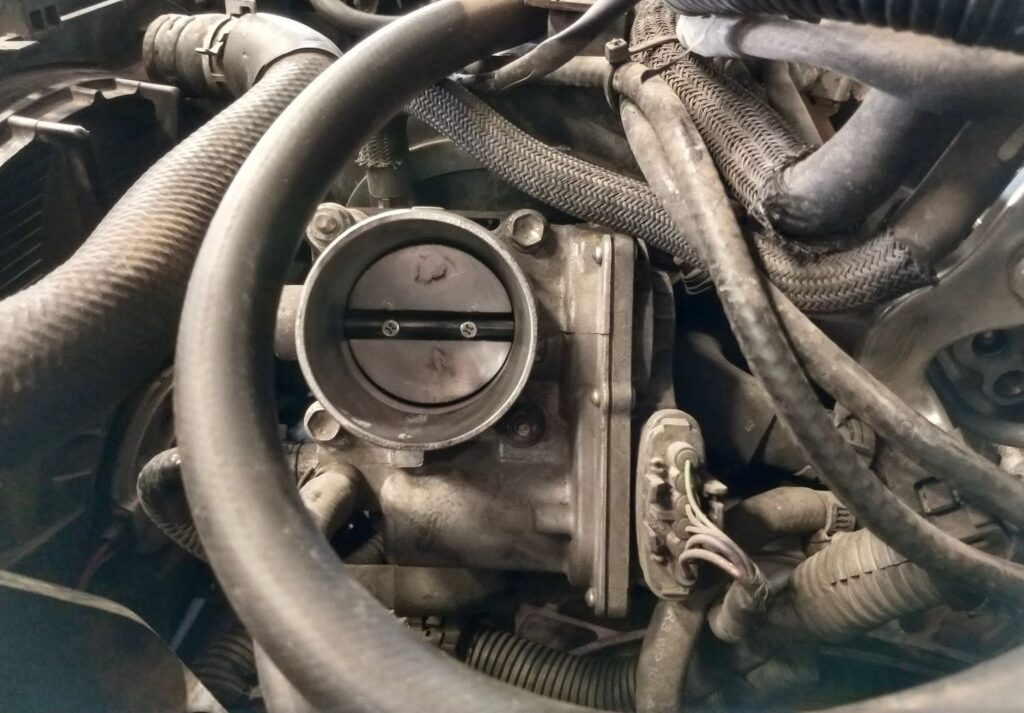Have you ever mixed up two different car parts because of their similar-sounding names? You are not alone. Some people have confused the throttle position sensor and the throttle body temperature sensor for each other. To make matters more confusing, these throttle body sensors are mounted on the same part and contribute to the smooth operation of the fuel injection system.
The similarities end there, however. The throttle position sensor tracks the butterfly spindle’s position and measures airflow. In contrast, the throttle body temperature sensor measures how hot or cold the air going through the throttle body is. Read on to better understand the differences between these throttle body sensors.
What’s the Difference Between the Throttle Position Sensor and the Throttle Body Temperature Sensor?
The throttle position sensor monitors the position of the throttle while the throttle body temperature sensor measures the temperature of the fuel-air mixture that goes through the throttle’s body.

What Is the Throttle Position Sensor?
The throttle position sensor’s name speaks for itself. Sometimes called the TPS, it’s a device that determines the throttle’s position. It transmits its readings to the powertrain control module (PCM).
In drive-by-wire cars, stepping on the gas pedal moves a valve that regulates airflow into the engine. Applying more pressure to the pedal increases the throttle opening’s size, which increases the airflow through the throttle body and into the engine.
Other cars use a throttle cable directly attached to the throttle plate. When you push the throttle pedal, the cable changes the position of the connected plate.
Whenever the throttle moves, the throttle position sensor tracks its movement. This sensor data goes to the PCM, which uses the throttle opening’s size to calculate the volume of air entering the engine at the time.
In newer vehicles, the throttle position sensor is built into the throttle body. The sensor isn’t serviced. If it develops a problem, the entire throttle body will need replacement.
Older throttle position sensor types and models require direct contact with the throttle body. Many are directly mounted on the butterfly valve spindle to make it easier to follow the throttle.

Why Is the Throttle Position Sensor Important?
The throttle controls the engine’s air intake. It ensures that the right amount of air reaches the cylinders, mixing with the gasoline sprayed by the fuel injectors to make the optimal fuel-air mixture.
If the engine receives more air than it needs, it will run lean. Burning a lean fuel-air mixture will cause problems like poor fuel economy, reduced engine power, and hesitation during acceleration. Running lean can also cause engine pinging.
Conversely, the engine will run rich if it doesn’t get enough air. Running on a rich fuel-air mixture also causes issues, such as fuel wastage and rough idling.
Whether it runs lean or rich, an engine that doesn’t receive the correct fuel-air mixture will wear out faster. Critical components like the spark plugs can fail earlier, which might cause severe damage to the engine.
To avoid either scenario, the PCM relies on the throttle position sensor to gauge how much air enters the throttle. Based on the sensor’s readings, the computer module will release the appropriate amount of fuel to create the optimal blend.
Bad Throttle Position Sensor Symptoms
Some throttle position sensors will last for the vehicle’s entire lifespan. However, others might need replacement much earlier.
A throttle position sensor can fail much earlier and you can’t really see them fail at a specific mileage.
–Anthony Harlin, ASE Certified Master Automobile Technician
The throttle position sensor’s electrical connection can degrade over time, interrupting its power supply and preventing its readings from reaching the PCM. Dirt can also clog the sensitive components that detect and measure the throttle’s movement, effectively blinding the device. And if one of the sensor’s internal components fails, it can send inaccurate data or stop transmitting altogether.
Here are the most common throttle position sensor symptoms:
- Check engine light turns on
- Slow acceleration
- Sharp bucking or jerking
- Surging and stalling engine
- Engine dies right after starting
- Reduced fuel economy
- PCM puts vehicle in safe mode
- Poor idle quality
What Is the Throttle Body Temperature Sensor?
Now let’s talk about the throttle body temperature sensor. This part measures the temperature of the fuel-air mixture bound for the engine’s combustion chamber.
Furthermore, the throttle body temperature sensor also checks how hot or cold the tubular housing for the throttle is. Once it obtains the required temperature readings, the sensor sends its findings to the PCM.

What Makes the Throttle Body Temperature Sensor Important?
Temperature plays a key role during combustion. The fuel-air mixture cannot be too hot or too cold. Otherwise, it won’t burn at the right time in the correct way, which will harm the engine’s performance.
At excessively high temperatures, gasoline will vaporize too early, which can reduce the power generated by the combustion process.
Low temperatures are not suitable for fuel-air mixtures, either. Colder blends require more heat before they can burn. If the ignition system cannot generate sufficient heat through its spark plugs, some fuel might not combust.
Fortunately, the PCM can tweak the fuel-air mixture’s temperature by altering how much fuel gets sprayed into the intake manifold. By adding more gasoline, the computer can cool down the blend. If it needs to raise the temperature, the PCM will reduce the fuel added to the air.
Bad Throttle Body Temperature Sensor Symptoms
The throttle body temperature sensor isn’t immune to wear. It can develop issues like faulty electrical circuits and carbon buildup that blocks its sensory apparatus. Once it stops working, you will need to replace it.
Keep an eye out for any of these bad throttle body temperature sensor symptoms:
- Check engine light illuminates
- Engine performs worse than it should
- Too much moisture in the exhaust
- Engine stalling
- Difficulty in starting the engine
How to Get Quality Replacement Throttle Position Sensor
As you know by now, both the throttle position sensor or the throttle body temperature sensor are important for keeping your vehicle running smoothly. If either is faulty, you’ll likely notice symptoms like the engine stalling or difficulty starting the vehicle. A trusted mechanic can tell you when it’s time to replace either of these sensors, which you can buy at CarParts.com.
CarParts.com offers fast shipping straight to your door, meaning you’ll have your new sensor in as fast as two working days. Our easy-to-navigate website is designed so you can order conveniently from the comforts of your own home. Order with ease using our secure and convenient checkout. If you have any questions or concerns, our helpful and friendly customer service team is happy to help. We’re available around the clock to assist you.
Place your order today for a replacement throttle position sensor or other sensors at CarParts.com.
Any information provided on this Website is for informational purposes only and is not intended to replace consultation with a professional mechanic. The accuracy and timeliness of the information may change from the time of publication.



























